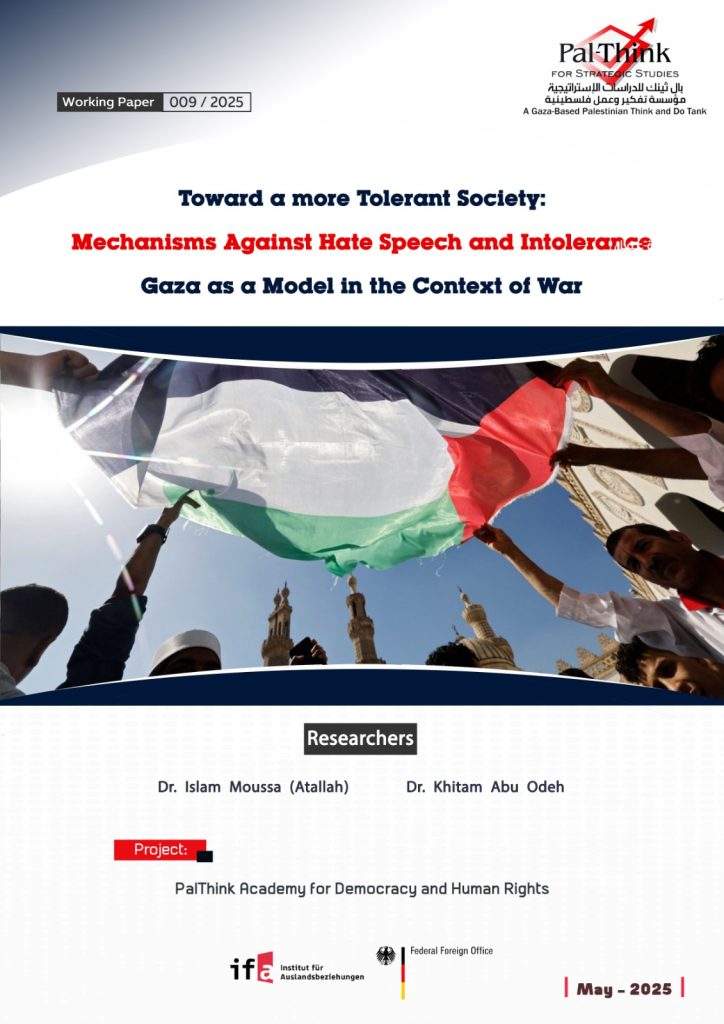
Introduction
In times of wars and disasters, the effects of destruction are not limited to material and human losses, but extend to the moral and social structure of society, generating new forms of tensions, intensifying latent negative tendencies, and inciting divisions that may remain for decades after the ceasefire. Hate speech and intolerance are among the most prominent threats to the Palestinian social fabric in times of crisis, and their presence has escalated sharply during the ongoing Israeli war on the Gaza Strip. In the face of widespread destruction, legal vacuum, mass displacement, insecurity, exclusion, and symbolic and moral violence, hate speech feeds on feelings of anger and despair, and finds fertile ground in a socially and politically exhausted environment. The danger of such rhetoric stems from the fact that it not only expresses temporary tension, but also reproduces structural divisions and deepens societal fissures along familial, regional, or political lines.
In the Palestinian context, hate speech cannot be separated from the general structure of the long conflict, whether with the occupation or internally between the components of society. Palestinians themselves, despite their collective suffering, have for years been facing increasing challenges related to weak social cohesion, the division of political authority, and the erosion of trust between citizens and their institutions. As the war on Gaza intensified and the humanitarian tragedy intensified, discourses of accusation, betrayal, and exclusion emerged, whether on the basis of political affiliation, family origins, geography (between those displaced from the north and those settled in the south), or even economic and social status, revealing an underlying crisis in the cultural and social structure that goes beyond the impact of the war itself.

Download the paper: click here

